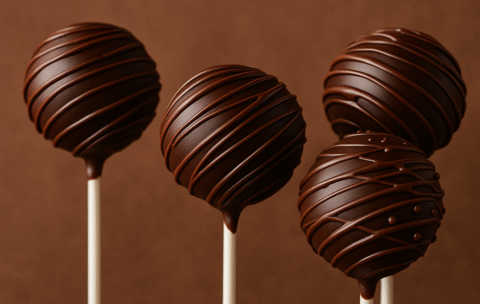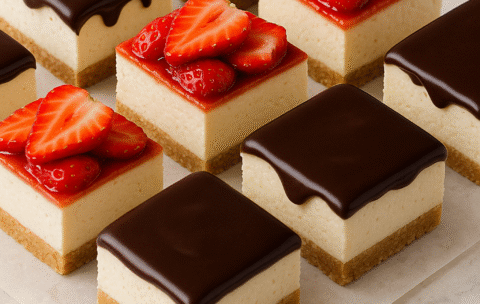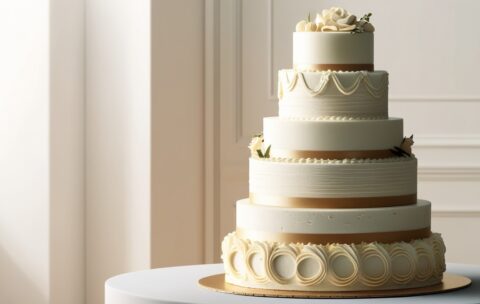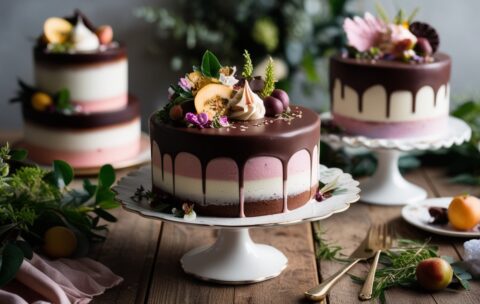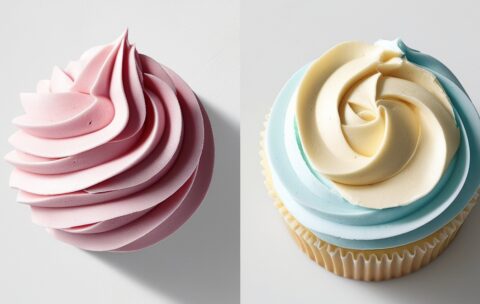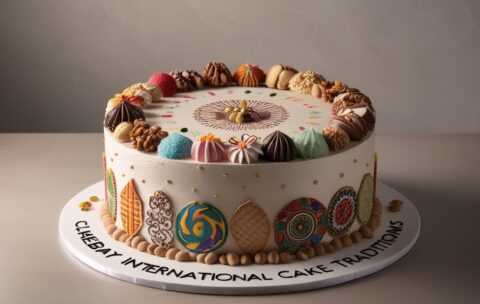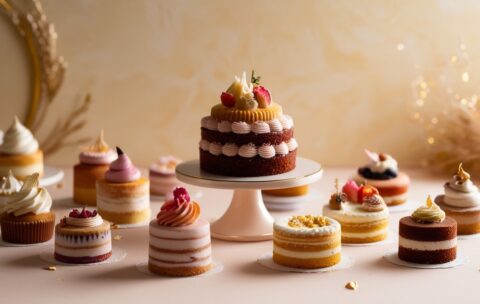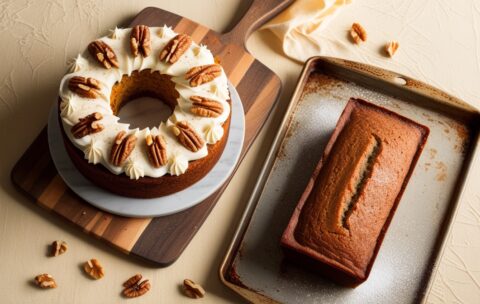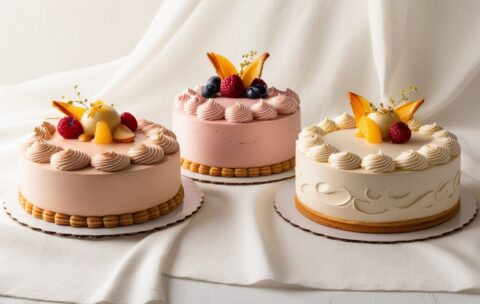Popular Topics
cake pops
cheesecake bars
Sugar Artistry
churro cake bites
no-bake desserts
Gluten-Free Flours
cinnamon sugar
Smooth Finish Techniques
dessert assembly
Cake Stability
Gateau Techniques
Entremet Construction
DessertRecipes
layered cheesecake
Royal Icing Techniques
easy baking
Gum Paste Florals
American Buttercream
French Buttercream
dessert bite
NoBakeRecipes
party snacks
dessert bites
single-portion baking
party treats
tempering chocolate
Vegan Baking
ChocolateCake
warm spices
Sugar Flowers
cream cheese frosting
Mirror Glaze
Buttercream Variations
Cake Decorating
PastryFundamentals
Layer Cakes
Cake Assembly
BakedDesserts
Buttercream & Ganache
Baking Refinement
Professional Techniques
flavor pairings
CakeDecor
Egg Replacements
VictoriaSponge
international cakes
Color Blending & Airbrushing
Panettone
Middle Eastern sweets
NakedCake
holiday cakes
SemiNakedCake
Cake Troubleshooting
CakeDesign
petite cake design
PastrySkills
MinimalistDesserts
Decorative Piping
nut variations
Genoise
chocolate mousse
sponge bases
BakingBasics
Popular Instructors
All Cakes Courses
Troubleshooting & Refinement Workshop
In this workshop, you’ll diagnose and resolve common cake-baking issues …
What you'll learn
Identifying Baking Flaws
Recognize symptoms: wet centers, domed tops, tunneling.
Distinguish oven, ingredient, and mixing–related causes.
Adjusting Recipes & Techniques
Modify ratios for moisture balance and crumb structure.
Tweak mixing times to avoid over- or undermixing.
Oven Calibration & Bake Environment
Test for hot spots with simple cake tester method.
Optimize rack placement and temperature adjustments.
Emergency Fixes During Baking
Rescue sinking cakes mid-bake with tented foil or reduced heat.
Correct cracked tops by adjusting cooling and humidity.
Refinement Practices
Use test batches to fine-tune recipes.
Record observations and standardize best practices.
Decorative Piping & Sugar Flowers
Master the art of cake embellishment with advanced piping techniques …
What you'll learn
Icing Consistency & Color Blending
Adjusting buttercream and royal icing to the proper firmness for different piping tasks.
Techniques for tinting icing and gum paste to achieve natural, gradient effects.
Piping Basics to Advanced Motifs
Foundational strokes (dots, lines, shells) leading to scrolls, rosettes, ruffles, and lace patterns.
Creating texture, dimension, and contrast through varying pressure, speed, and tip selection.
Sugar Flower Construction
Preparing and conditioning gum paste and fondant for pliability.
Forming petals, leaves, and buds for common flowers (roses, peonies, ranunculus).
Assembling individual elements into realistic bouquets and sprays.
Composition & Placement
Designing balanced cake layouts: focal points, color harmony, and scale.
Securing decorations on tiered and multi-surface cakes without collapse.
Troubleshooting & Finishing Touches
Preventing issues such as cracking, sagging, or color bleeding.
Applying final details: dusting, veining, and edible luster for lifelike appearance.
International Cake Traditions
“International Cake Traditions” explores the most fascinating and colorful cakes …
What you'll learn
How to prepare and bake at least five signature cakes from different countries, using authentic ingredients and methods
The cultural and historical significance of each cake: when and why it’s traditionally served
Variations on flavorings and decorations that make each region’s version unique
Techniques for achieving proper texture, moisture, and flavor balance in international recipes
Tips for adapting ingredients when certain items are not readily available in your area
Presentation ideas to honor traditional styles (for example, Panettone’s distinctive domed shape or a Japanese wagashi’s intricate design)
Mini & Individual Cake Creations
“Mini & Individual Cake Creations” focuses on crafting small-scale cakes …
What you'll learn
How to scale down classic cake recipes (sponge, chiffon, pound) for smaller molds and ring cutters
Techniques for creating uniformly shaped mini cakes: using acetate sides, ring molds, and layered inserts
Methods for preparing delicate fillings—fruit compotes, chocolate ganache, and flavored mousses—suited to individual portions
Decorating approaches tailored to small canvases: tempered chocolate accents, buttercream piping, and fresh garnishes
Temperature control and timing secrets that prevent overbaking when working with small molds
Ideas for plating and packaging individual cakes to enhance presentation for events or retail
Carrot Cake & Spiced Loaf Cakes
“Carrot Cake & Spiced Loaf Cakes” guides you through creating …
What you'll learn
How to grate carrots (or prepare alternative base ingredients) to achieve ideal moisture and texture
Techniques for toasting nuts and folding mix-ins to prevent a heavy crumb
Spice blending ratios for cinnamon, nutmeg, ginger, and cloves to balance warmth and sweetness
Methods to cream butter and sugar just enough—no overmixing—so loaves rise evenly without tunnels
Frosting options: crafting classic cream cheese frosting, drizzling brown butter glaze, and applying a neat powdered sugar dusting
Variations on the base recipe (apple-spice, pumpkin-spice, coconut-carrot) to adapt to seasonal ingredients
Mousse & Bavarian Cream Cakes
“Mousse & Bavarian Cream Cakes” guides you through crafting light, …
What you'll learn
How to prepare a stable French or Italian meringue for mousse bases, ensuring smooth, airy texture
Techniques for melting and tempering chocolate, fruit purées, or coffee infusions to flavor mousses
Steps for making Bavarian cream: blooming gelatin, combining with custard base, and folding whipped cream for lightness
Methods for assembling layered desserts: soaking sponge or biscuit bases, pouring mousse, and creating neat, level layers
Tips for unmolding and glazing cakes—mirror glaze or ganache—to achieve a glossy, professional finish
Variations on flavor profiles: dark chocolate-mint mousse, raspberry-vanilla Bavarian, and tiramisu-inspired cream layers
What you'll learn
The difference between naked and semi-naked finishes
How to achieve even cake layers with minimal frosting
Techniques for crumb coating and thin buttercream application
Decorating ideas: fresh flowers, fruit, and simple drizzles
Tips for maintaining stability despite lighter frosting
French Gateau & Entremet Principles
This comprehensive course delves into the art and science behind …
What you'll learn
Fundamental Structures: How to build entremets layer by layer—choosing and baking the right sponge (génoise, Joconde, biscuit cuillère), creating thin croustillant layers, and assembling mousse and bavarois tiers for height and stability.
Texture & Temperature Management: Techniques to ensure each component sets properly (e.g., mousse firmness, gelatin bloom, glaze viscosity) and how to keep layers distinct without bleeding.
Flavor Profiling & Balance: Pairing fruit purées, chocolate, nuts, and creams to achieve harmonious taste profiles. Understanding acidity, sweetness, and how to cut richness with complementary elements (fruit inserts, crunchy praline).
Advanced Finishing Techniques: Preparing and applying a smooth mirror glaze, torching velour sprays, using transfer sheets, and piping delicate decorations. Learning how to achieve a polished, professional look every time.
Assembly & Troubleshooting: Best practices for unmolding, repositioning, and storing entremets. Identifying and correcting common issues—sogginess, collapsed layers, uneven glazes.
Presentation & Plating: Strategies for cutting perfectly even slices, garnishing with textures (tuile, cocoa nibs, spun sugar), and arranging plated portions so they look as good as they taste.


